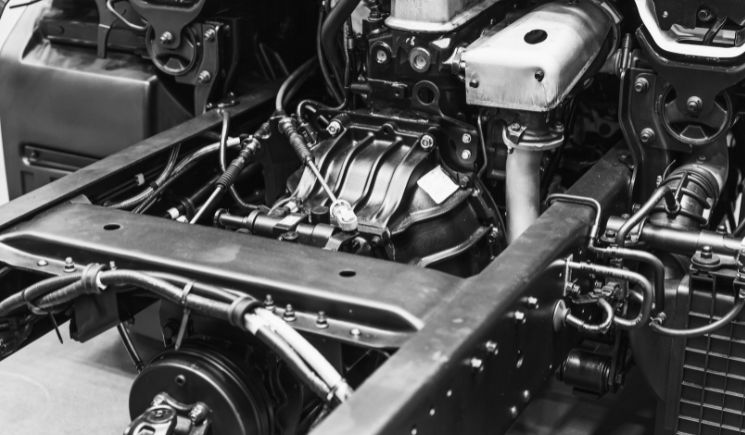The Nissan chassis control system helps to regulate the vehicle stability and traction.
It includes features like anti-lock brakes, electronic stability control, and traction control.
If you recently encountered an error in chassis control system, mostly it includes a fault in one or more of those electronic systems.
Causes of the Error
Sensor Malfunction
- The chassis control system uses several key sensors to monitor the vehicle’s parameters. Including the wheel speed sensor, steering angle sensor, lateral acceleration sensor, and the yaw rate sensor.
- If any of these critical sensors fails or provides inaccurate data to the chassis control module. It will trigger an error code.
- The wheel speed sensors that is been located at each wheel, can fail due to damage, worn wiring, corrosion, or interference from other vehicle components.
- If so a faulty wheel speed sensor will send incorrect wheel rotation data to the computer, by disrupting stability features.
- The steering angle sensor is usually mounted on the steering column and tracks the steering input from the driver.
- Error codes due to steering angle sensor’s, can occur from sensor calibration issues or physical damage from a front-end collision.
- The lateral acceleration sensor, typically mounted under the center console, detects sideways g-forces during cornering and evasive maneuvers.
- Faults in this sensor usually happens when the sensor gets shaken out of calibration or has some bad circuit wiring connections.
- The yaw rate sensor monitors the rotational movement of the vehicle’s vertical axis.
- It is one of the most complex sensors in the system.
- If there are any glitches in the yaw rate sensor, the data that generates from this sensor will disrupt the whole stability control functionality.
Computer Failure
- The chassis control module is the master computer that processes data from the various sensors and actuates brakes, engine power, and differentials accordingly to the maximize traction and stability.
- This module can cause electrical failures, software glitches, or physical damage which leads to system malfunctions.
- Common computer failure modes include damaged processor circuits from electrical surges, corrupted memory modules, broken connector pins, programming errors that leads to sensor data mismatches, and total failure due to flood damage or fire exposure inside the chassis control unit.
- Remember that any of these can generate faulty codes.
Wiring Problems
- The chassis control system relies on numerous wiring harnesses to connect all sensors, actuators, and the main computer module.
- Damaged wires from wear, rubbing, rodent chewing, or moisture ingress can cause connection disruptions between components.
- Intermittent faults and loss of communication through CAN bus networks are common causes of harness issues.
- Short circuits can also introduce incorrect sensor values or battery voltage fluctuations that disrupt the control unit operation.
- Therefore, careful inspection of wires and connectors is necessary to find the root wiring gremlins.
Solenoid Actuator Failure
- To modulate the brake pressure during stability and wheel slip events, the chassis control module actuates solenoid valves in the brake hydraulic control unit.
- These small actuators can get stuck or stop functioning due to contamination, seal wear, electrical failure, or activation beyond their mechanical lifespan.
- A failed solenoid will disable one or more brake channels controlled by the stability system.
- The chassis control module sets an error code since it can no longer perform brake interventions due to the inoperable solenoid actuator.
Resolving a Chassis Control System Error on a Nissan Vehicle
Diagnostic Testing
- Perform a thorough diagnostic testing to accurately pinpoint where the chassis control system fault is originating.
- Check for error codes, sensor operation or signal transmission issues, computer module failures, and wiring harness damage.
- Use a professional scan tool and consult the vehicle repair manual to conduct a complete electrical and sensor diagnosis.
Sensor and Wiring Repairs
- Replace any damaged chassis control sensors including those for wheel speed monitoring, steering angle input, lateral g-forces, or the vehicle yaw.
- Ensure that the all mounting orientations and calibrations meets the factory specifications.
- Inspect the wiring harnesses by end-to-end for chafing, connector issues, or rodent chewing damage.
- Make any necessary pin splicing, insulation taping, or full wiring harness replacement needed due to exposed/compromised connections.
Control Module Replacement
- If the chassis control computer itself is faulty, replace it with a new unit or a clean, working module from a reputable auto parts shop.
- Use some extreme care during the removal and installation to avoid any damaging connector pins or the control module housing.
Frequently Asked Questions About Chassis Control System Error Nissan
Q: Is it safe to drive with the Nissan chassis control error light on?
A: No. Driving with this error can lead to a loss of stability and traction. The vehicle dynamics systems will be disabled, so it is best to avoid driving in hazardous conditions like rain, snow, or ice with this active warning light.
Q: How much does it cost to fix the Nissan’s chassis control system errors?
A: Repair costs can vary widely from $100 for a simple sensor replacement up to $2000 if the computer, hydraulic unit, or the wiring harness needs major servicing or replacements.
Was this helpful?
Thanks for your feedback!

